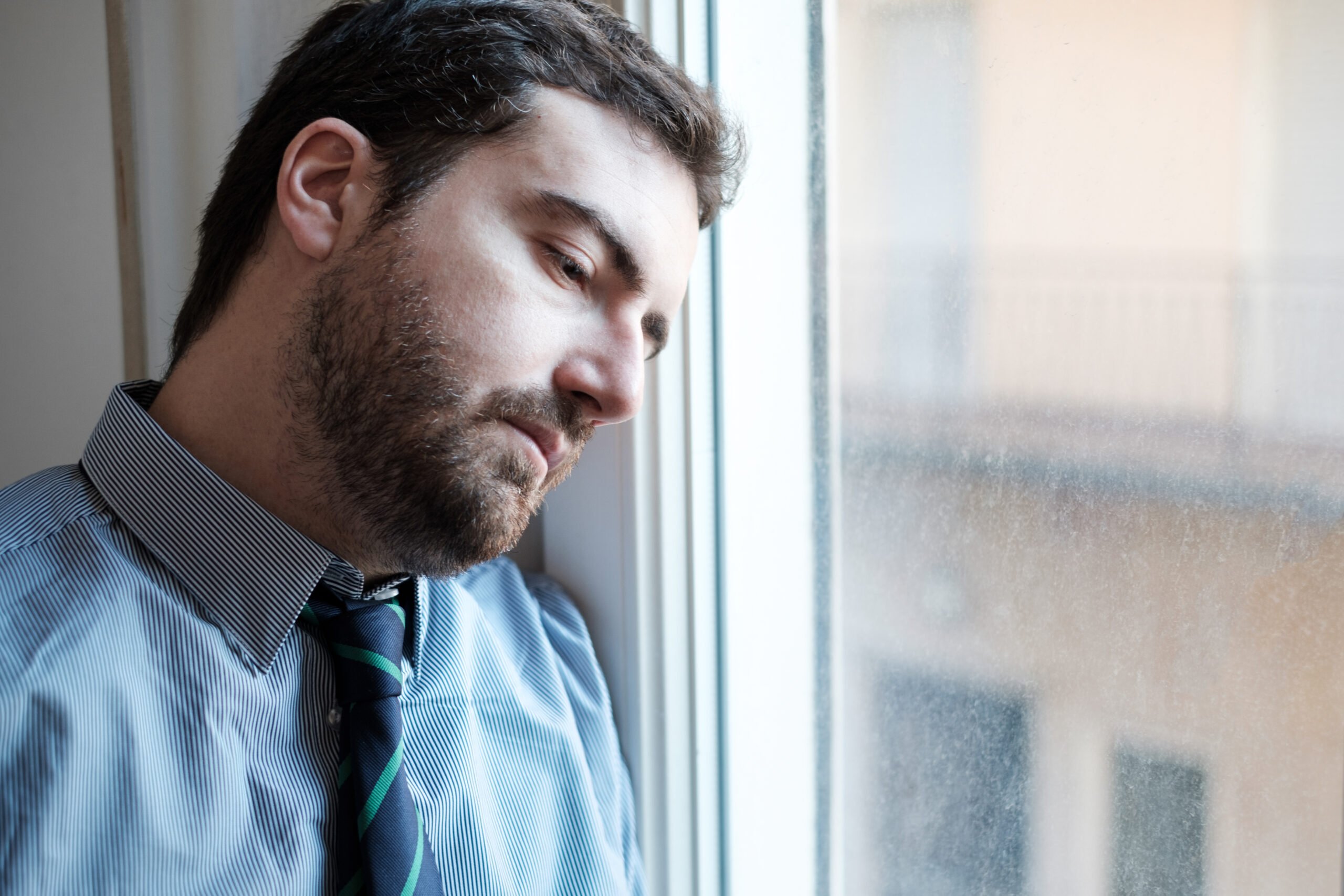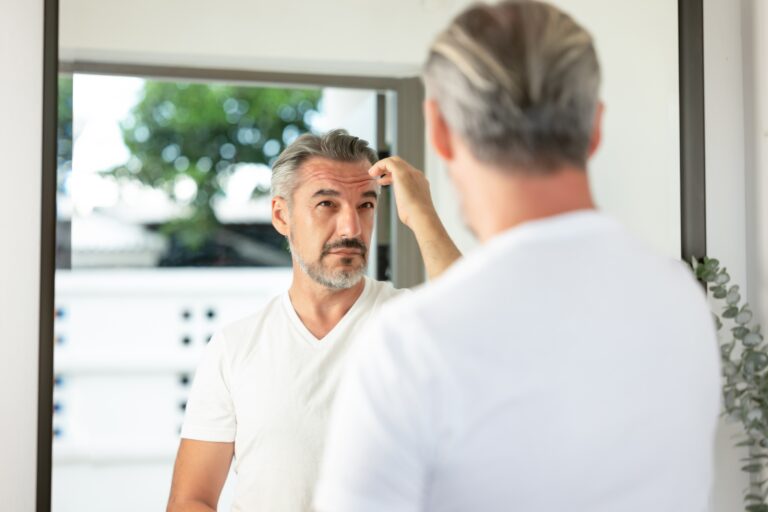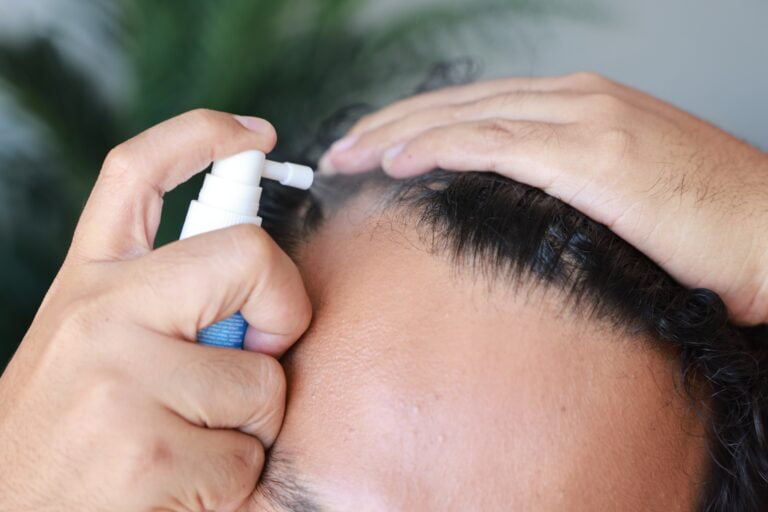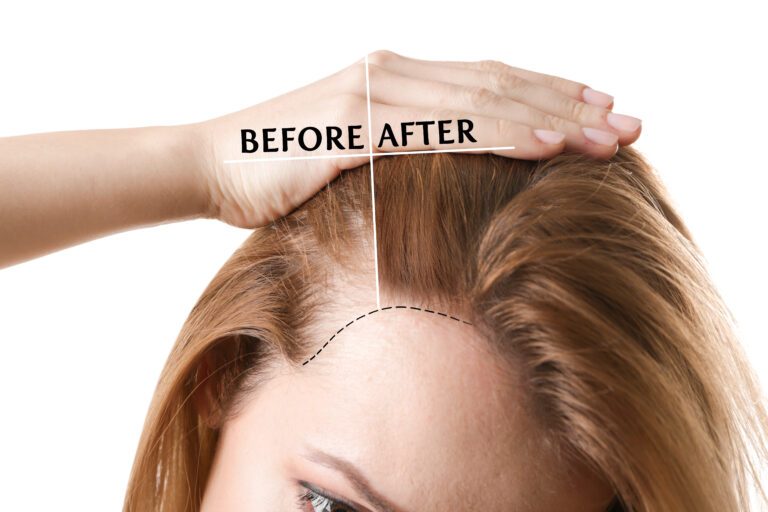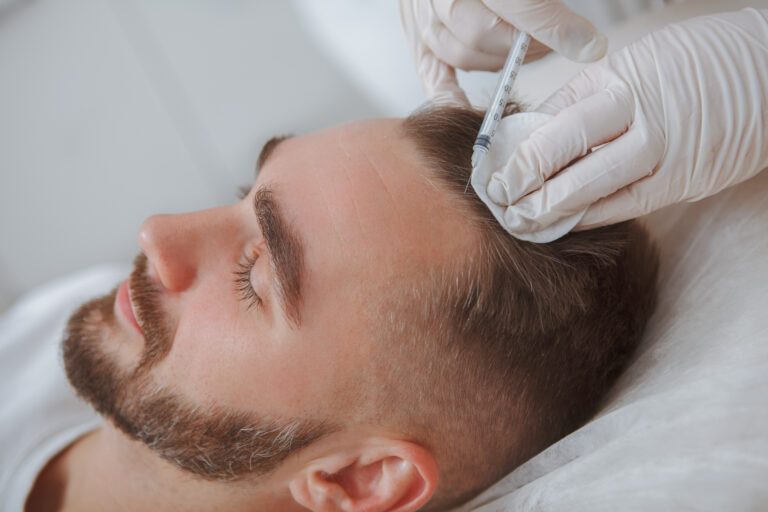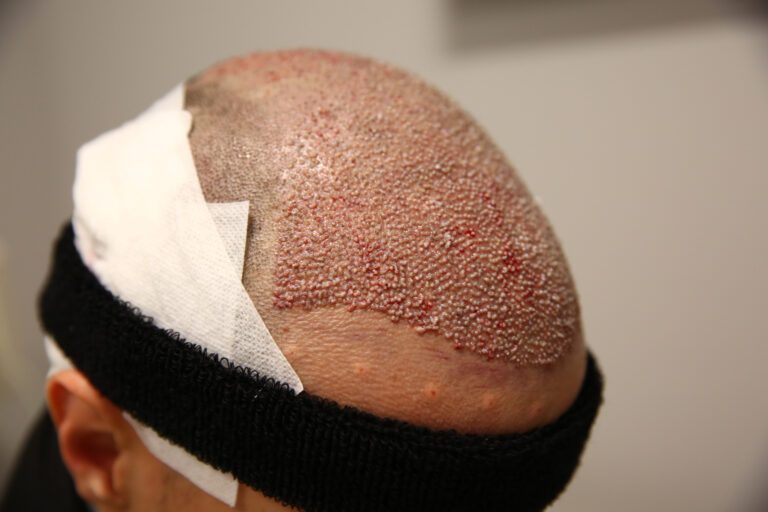Stopping Finasteride: The Potential Side Effects
Male pattern baldness is a condition that affects 30% to 50% of men by the age of 50. Many of them choose to combat the effects of hair loss by taking medication. However, medication such as finasteride can have many side effects
If you’ve had enough of these side effects and have decided to stop using finasteride, what happens now?
According to experts, when an individual stops using finasteride, there are no adverse health effects or withdrawal symptoms. However, they can expect their DHT levels to rise and their hair loss issues to return. Additionally, finasteride’s side effects can take a while to wear off.
Read on to learn more about the side effects of stopping finasteride and how long they last.
What Happens When You Stop Taking Finasteride?
To understand what happens when you stop taking finasteride, you need to first know how it works.
This drug is prescribed to men with male pattern baldness. It curbs the symptoms of this condition by inhibiting the production of dihydrotestosterone (DHT). You may also know this drug as Propecia, which is a brand-name version of it.
DHT is a sex hormone that induces hair loss when your body secretes it in excess. It does so by blocking receptors in your hair follicles, which reduces their size. When this continues to happen, over time your hair follicles get weaker and eventually stop working.
In essence, finasteride stops your body from converting testosterone into DHT. As a result, your DHT levels fall and your hair follicles are rejuvenated.
If you’ve been taking finasteride for a while and have decided to stop, you can expect your hair loss woes to return. After all, this drug is only effective as long as you take it consistently. Once it’s out of your system, DHT levels will rise again, making your hair follicles smaller and weaker.
Finasteride Side Effects After Stopping
Taking finasteride comes with a lot of side effects. However, these side effects are most likely to be mild, whereas many finasteride users don’t experience any at all.
Yet, just to be on the safe side, here are some of the most common potential side effects you may experience after you stop taking finasteride:
Sexual Side Effects
Since DHT is a sex hormone, taking any medication that alters its secretion levels in your body puts you at risk of sexual side effects. This issue is no different in the case of finasteride.
Some of the sexual side effects you may experience when using finasteride include a drop in sex drive, erectile dysfunction, and reduced semen volume. You may also experience penile changes or reduced pleasure during orgasms.
You’re more likely to experience these side effects if you take the drug in doses of more than five milligrams. This dosage is usually prescribed to those using finasteride to treat an enlarged prostate.
Other Side Effects
Aside from the sexual side effects, you may also experience other unwanted conditions. These conditions include dizziness, shortness of breath, skin rashes, a stuffy nose, and gynecomastia.
How Long Does Finasteride Stay in Your System?
If you’re wondering how long finasteride stays in your system after you stop taking it, the answer lies in the drug’s half-life.
The half-life of finasteride is between five and six hours for users younger than 70 years of age. This means that people in this demographic can expect finasteride to stay in their system for 25 to 35 hours following their last dose.
However, that doesn’t mean that the drug is completely gone after that.
Finasteride inhibits the conversion from testosterone to DHT by blocking the enzymes responsible for the process. These enzymes have a much longer half-life of 30 days.
Therefore, it can take over a month for these enzymes to function normally and for your DHT levels to rise once again.
How Long Do Propecia Side Effects Last After Stopping?
Propecia’s side effects don’t go away as soon as you stop taking it. You can still expect some side effects to linger up to 10 days after stopping.
In some cases, these side effects can become chronic. This is especially true for sexual side effects, such as erectile dysfunction and reduced sex drive. Some studies have found that this can happen with 16% of Propecia users.
This occurrence is referred to as ‘post-finasteride syndrome.’
Post-Finasteride Syndrome
Post-finasteride syndrome is a condition that involves the deterioration of an individual’s sexual, mental, and physical well-being even after they stop taking finasteride.
The symptoms of this condition include the sexual dysfunctions mentioned above, among others. Those who suffer from post-finasteride syndrome may also experience muscle weakness, chronic fatigue, joint pain, or dry skin.
On the mental front, the syndrome can cause insomnia, anxiety, depression, panic attacks, and suicidal thoughts.
Is Stopping Finasteride Cold Turkey a Good Idea?
If you’ve decided that the side effects you may possibly experience when taking finasteride aren’t worth the risk, you may want to get off the drug straight away.
This is perfectly fine and won’t cause any adverse health effects or withdrawal symptoms. However, you may notice other issues, like hair loss or symptoms of an enlarged prostate, have returned shortly thereafter.
Note that this may not happen if you use a substitute medication.
When Should You Stop Using Finasteride?
As with any drug, the way your body reacts to finasteride is different from other users. For example, you may not experience any side effects at all. On the other hand, you may suffer from severe side effects like the ones mentioned above.
If you feel like the side effects of finasteride are messing with your well-being and aren’t going away, you should consult your physician to determine if you should stop using the drug.
After you stop taking finasteride, you’ll gradually see the drug’s side effects go away. Note that this may not be immediate, even if you stop using it cold turkey.
If it’s been weeks since you last took finasteride and you’re still experiencing adverse effects. You should visit your doctor to see if you’re suffering from post-finasteride syndrome.
Alternatives to Finasteride
If your experience with finasteride hasn’t been the best or you know someone that has tried it and isn’t satisfied, you may want to consider an alternative drug.
The most commonly used finasteride alternative is minoxidil. You’ll often find this drug in pharmacies under the brand name Rogaine.
You can buy minoxidil from your pharmacy either as a solution or as a foam. While finasteride is administered as a tablet, Rogaine is applied straight to the scalp to stimulate follicles and improve hair growth.
Another difference between minoxidil and finasteride is the way they work. Minoxidil isn’t a DHT blocker: it promotes hair growth by improving blood circulation to your scalp. This increased blood flow makes your hair follicles healthier.
Due to this difference in mechanisms, finasteride and minoxidil are often used simultaneously. Hence, you can boost the potency of both medications in curbing the effects of male pattern baldness.
Are There Drugs You Can’t Take With Finasteride?
Before you use any drug, you need to be aware of other medications that you should avoid while taking it. In the case of finasteride, the FDA states that there are no dangerous interactions associated with the drug.
That being said, there’s still the issue of other drugs raising finasteride levels in your bloodstream above the safe threshold. In turn, this can lead to more severe side effects. It also puts you at a higher risk of developing post-finasteride syndrome.
Your best course of action is to discuss the suitability of finasteride for you with a licensed physician. Judging by your medical history and any pre-existing conditions, they’ll be able to tell you if finasteride is right for you.
Is Finasteride a Performance-Enhancing Drug?
Finasteride has made the news in the world of sports several times, and not in a positive light.
The World Anti-Doping Agency (WADA) considers finasteride a banned substance. The justification is that finasteride can conceal performance-enhancing drugs, even though it isn’t one itself.
In turn, it makes it difficult for WADA to detect if an athlete is taking PEDs through a urine test. Therefore, finasteride isn’t a good option for you if you’re involved in any competitive sports at a high level.
Conclusion
Have you been taking finasteride for a while now and have grown tired of the side effects that come with it? If so, you’ve probably considered stopping finasteride and are wondering what happens when you do.
Finasteride is only effective as long as you keep using it. As soon as you abstain from taking the tablets, you’ll notice your hair loss issues returning shortly after. In addition, if you’re taking the drug as a treatment for an enlarged prostate, your symptoms will return.
As for the drug’s side effects, they may take a few days, and in some cases, weeks before they go away completely. In rare situations, some men develop post-finasteride syndrome, which means that the side effects become permanent.

